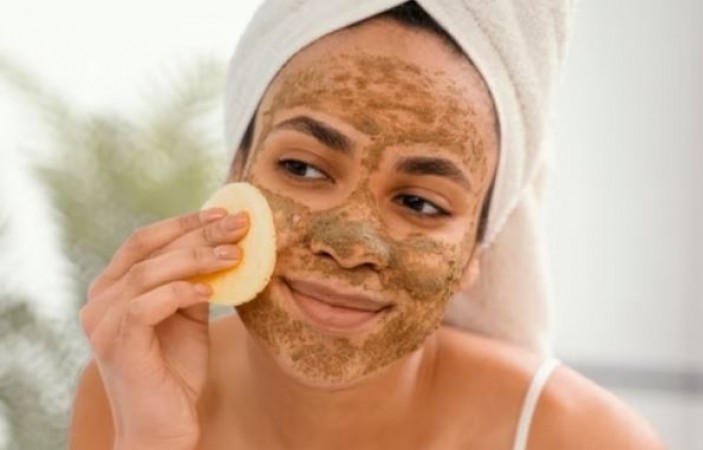
In our pursuit of radiant and healthy skin, exfoliation plays a crucial role. However, improper use of scrub can lead to adverse effects, undermining our skincare efforts. This comprehensive guide aims to elucidate the correct techniques and precautions to ensure effective and safe scrub application, ultimately enhancing skin health and appearance.
Understanding the Importance of Exfoliation:
Exfoliation is the process of removing dead skin cells from the skin's surface, revealing fresher, smoother skin underneath. This essential skincare step helps unclog pores, prevent breakouts, and improve skin texture and tone. Regular exfoliation also enhances the absorption of skincare products, maximizing their efficacy.
Types of Scrubs:
a. Physical Scrubs: Physical scrubs contain abrasive particles, such as sugar, salt, or microbeads, which physically slough off dead skin cells when massaged onto the skin.
b. Chemical Scrubs: Chemical scrubs utilize acids, such as alpha hydroxy acids (AHAs) or beta hydroxy acids (BHAs), to dissolve dead skin cells and promote cellular turnover.
c. Enzymatic Scrubs: Enzymatic scrubs contain enzymes, such as papain or bromelain, which break down protein bonds between dead skin cells, facilitating their removal.
Choosing the Right Scrub for Your Skin Type:
a. Oily Skin: Opt for a scrub with salicylic acid or clay to absorb excess oil and unclog pores.
b. Dry Skin: Choose a gentle scrub with moisturizing ingredients, such as hyaluronic acid or glycerin, to prevent over-drying.
c. Sensitive Skin: Select a mild, fragrance-free scrub formulated with soothing ingredients like oatmeal or chamomile to minimize irritation.
Preparing Your Skin:
a. Cleanse: Start with a gentle cleanser to remove dirt, oil, and makeup, ensuring a clean canvas for exfoliation.
b. Steam: Steam your face or use a warm towel to open up pores and soften the skin, enhancing the efficacy of the scrub.
c. Patch Test: Perform a patch test on a small area of your skin to check for any adverse reactions or sensitivity to the scrub.
Applying the Scrub:
a. Quantity: Use a pea-sized amount of scrub for the face and neck, adjusting the amount based on the size of the treatment area.
b. Technique: Gently massage the scrub onto damp skin using circular motions, focusing on areas prone to congestion or roughness.
c. Avoiding Pressure: Refrain from applying excessive pressure, as this can cause micro-tears in the skin and exacerbate irritation.
d. Duration: Limit the scrubbing duration to 1-2 minutes to prevent over-exfoliation and irritation.
Post-Exfoliation Care:
a. Rinse Thoroughly: After exfoliating, rinse your skin with lukewarm water to remove any residue, ensuring no scrub particles are left behind.
b. Moisturize: Apply a hydrating moisturizer to replenish lost moisture and soothe the skin, locking in hydration.
c. Sun Protection: Protect your skin from harmful UV rays by applying a broad-spectrum sunscreen with SPF 30 or higher, as exfoliation can increase sun sensitivity.
Frequency of Exfoliation:
a. Normal/Combination Skin: Exfoliate 2-3 times a week to maintain optimal skin health and radiance.
b. Oily Skin: Exfoliate every other day to control excess oil production and prevent breakouts.
c. Dry/Sensitive Skin: Limit exfoliation to once a week or less to avoid stripping the skin's natural oils and causing irritation.
Signs of Over-Exfoliation:
a. Redness: Excessive scrubbing can lead to redness and inflammation, indicating irritation and over-stimulation of the skin.
b. Dryness: Over-exfoliation disrupts the skin's moisture barrier, resulting in dryness, flakiness, and tightness.
c. Sensitivity: If your skin becomes increasingly sensitive or reactive to skincare products, it may be a sign of over-exfoliation.
d. Breakouts: Paradoxically, over-exfoliation can trigger breakouts due to skin irritation and compromised barrier function.
Adjusting Your Exfoliation Routine:
a. Reduce Frequency: If you experience signs of over-exfoliation, reduce the frequency of exfoliation and focus on gentle, hydrating skincare products.
b. Switch Formulations: Consider switching to a milder scrub or alternating between physical and chemical exfoliants to minimize irritation.
c. Consult a Dermatologist: If you're unsure about your exfoliation routine or experiencing persistent skin issues, seek advice from a dermatologist for personalized recommendations.
Mastering the art of scrub application is essential for maintaining healthy, glowing skin. By understanding the importance of exfoliation, choosing the right scrub for your skin type, and following proper techniques and precautions, you can effectively remove dead skin cells, unclog pores, and reveal a smoother, more radiant complexion. With regular exfoliation and mindful skincare practices, you can achieve optimal skin health and confidence in your appearance.
Want to Reduce Belly Fat? Take THESE nuts daily
Do not ignore the prick in the chest, there can be 5 dangerous reasons
Due to this problem in the eyes, Glaucoma occurs, then the eyes start filling with water